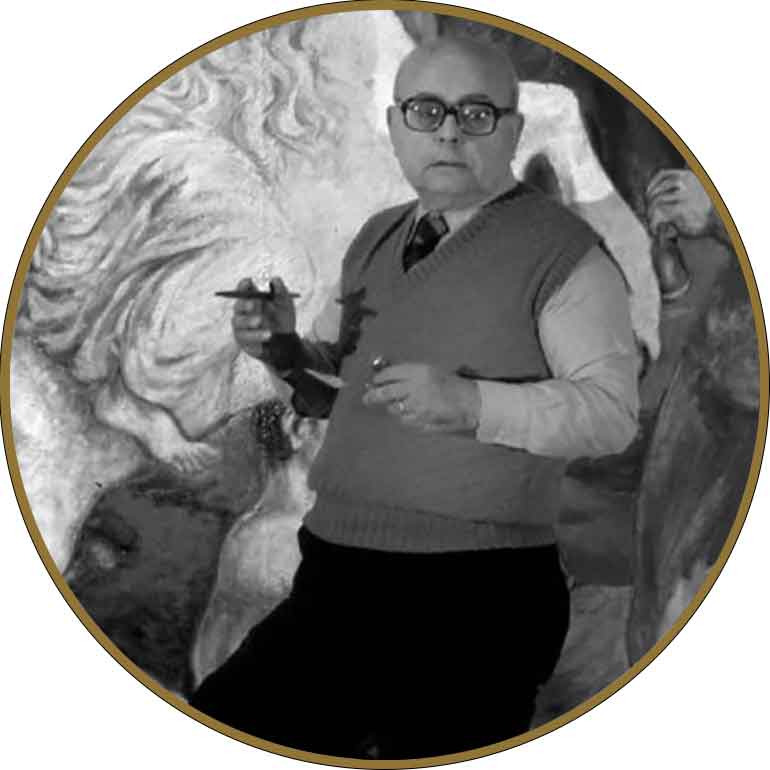Aligi Sassu biography

Aligi Sassu, born in Milan in 1912, was one of the most important Italian painters of the second half of the twentieth century. Son of Antonio Sassu, one of the founders of the Italian Socialist Party in Sassari, and Lina Pedretti, originally from Parma, he had the opportunity from a young age to come into contact with the Milanese avant-gardes, thanks to the strong friendship between his father and the futurist artist Carlo Carrà. At just seven years old, in 1919, Aligi Sassu visited the National Futurist Exhibition at the Galleria Moretti in Palazzo Cova, where the main representatives of the futurist movement were gathered. This meeting marked the beginning of his passion for art and, in 1928, thanks to his friendship with Bruno Munari, he participated in the Venice Biennale at the invitation of Filippo Tommaso Marinetti, the founder of Futurism. Despite the economic hardships affecting the family, Aligi Sassu managed to attend evening classes and work as an apprentice at a lithographic printing house and as an assistant to a mural decorator. Meanwhile, he developed his interest in futurist painting, while trying to carve out his own personal artistic path.
During the Parisian period of 1934, Aligi Sassu deepened his knowledge of the works of great masters, such as Delacroix and the Impressionists. These encounters influenced his painting, leading him to create works that combine the dynamic energy of Futurism with a more personal and reflective expression. In the 1930s, he formed the Gruppo Rosso, with artists like Renato Guttuso, dedicating himself to politically and socially engaged art. The series of "Uomini rossi" is an expression of this phase, in which he represents mythological and popular figures immersed in a magical world distant from reality.
His painting became increasingly eclectic and varied, ranging from sacred works, café scenes, boxers, and horses, which became his distinctive trademark. His passion for horses led him to create numerous works, but the artist cannot be limited to this single symbol, as his production was vast and multifaceted.
In 1964, Aligi Sassu moved to Spain, to Mallorca, where he developed new techniques and experimented with the use of acrylic to enhance the island's vibrant colors. Here was born the series of "Tauromachie", inspired by Spanish culture and bullfighting.
Returning to Milan in the 1980s, he continued to collaborate with publishing houses and illustrate literary masterpieces such as Alessandro Manzoni's "Promessi Sposi". Over the years, he donated numerous works, created from 1927 to 1996, to the city of Lugano, giving rise to the Aligi Sassu and Helenita Olivares Foundation.
Aligi Sassu died in 2000, in his home in Pollença, Mallorca, on his birthday, at the age of 88. His artistic legacy has been celebrated by numerous exhibitions worldwide, testifying to the value and importance of his contribution to Italian and international art. Aligi Sassu will remain in history as a cosmopolitan artist, open to the world and humanity, who left an indelible mark on the artistic landscape of the twentieth century. His painting, characterized by vibrant color and the search for personal expression, continued to influence subsequent generations of artists and to move audiences around the world.



